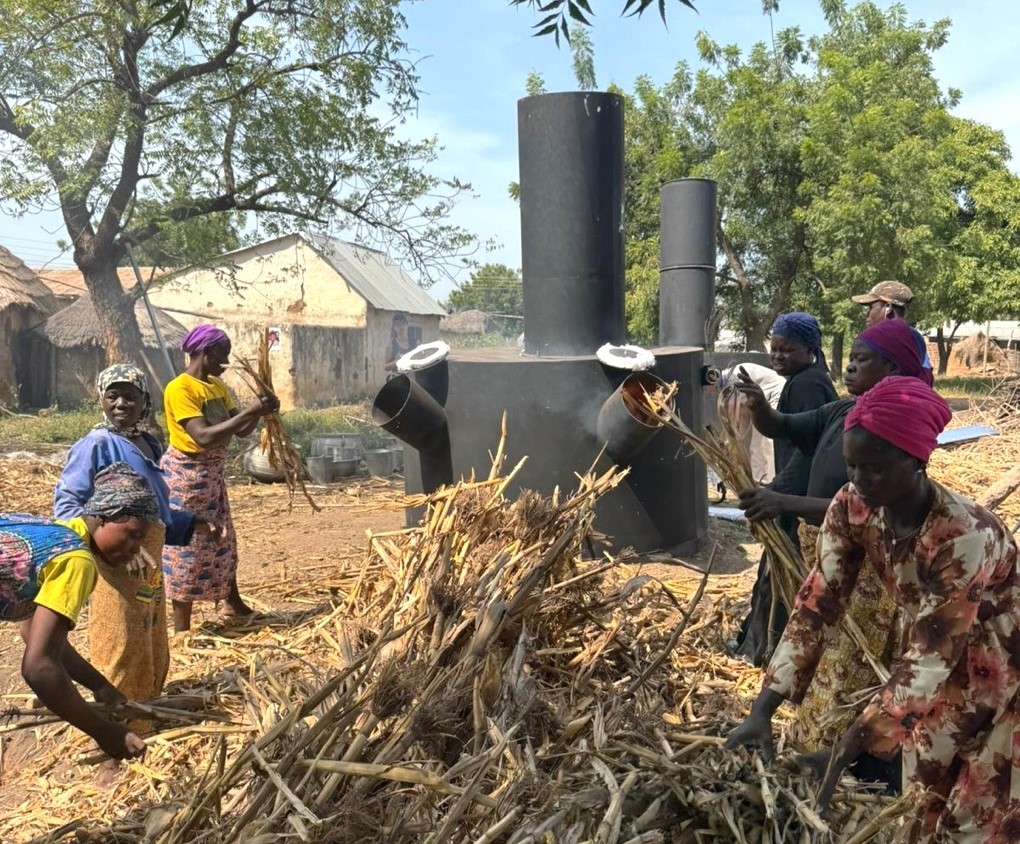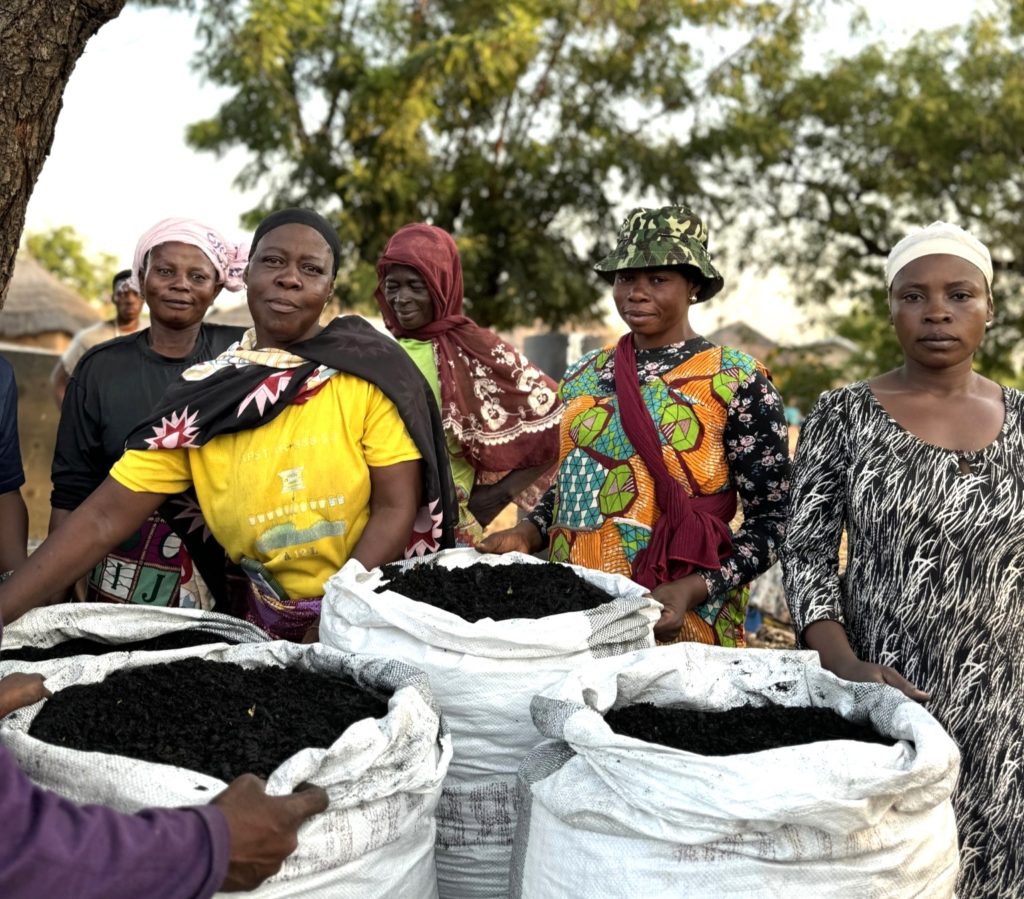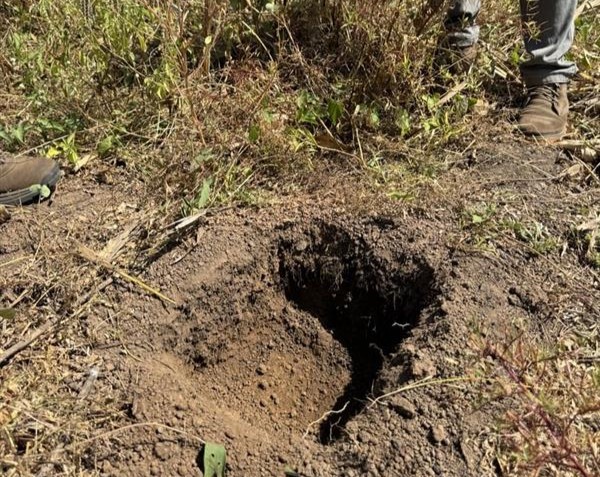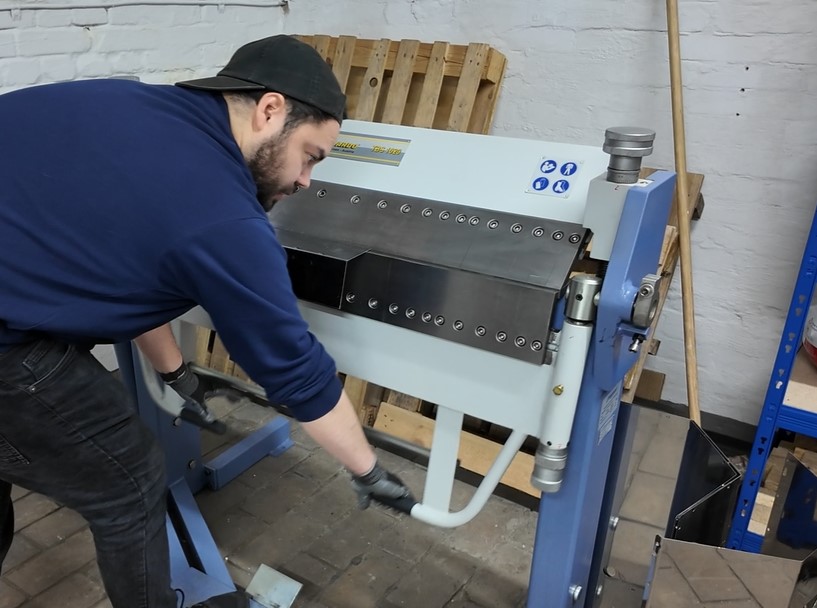atmosfair is expanding its negative emissions projects in Africa. In Ghana, atmosfair produces biochar using innovative pyrolysis units, which remove CO₂ from the atmosphere and permanently sequester it in the soil. This improves agricultural yields in a region where fields suffer from erosion and nutrient deficiency.
Northern Region, Ghana, February 2025. In the northern part of the African country, atmosfair is now constructing small pyrolysis units. These units produce biochar significantly more efficiently than traditional earth kilns, which are simple pits used to carbonize plant material. In partnership with Carboneers, atmosfair is developing steel hoods designed to cover the pyrolysis pits. The organization has been testing these hoods on-site for months while continuously improving their design. This technology effectively transforms basic earth kilns into small-scale pyrolysis units. The initiative will provide these units to 300 villages, enabling female farmers to convert maize and cassava crop residues into biochar. This method will allow atmosfair to remove 13,000 tons of carbon dioxide annually from the atmosphere – equivalent to the emissions produced by 8,000 intercontinental flights.

Biochar improves depleted soils
In Ghana, farming is predominantly performed by women. The farmers use biochar as fertilizer, often mixed with manure or compost. atmosfair Project Manager Isabel Messori explains the significance for people in the region: “Farmers in northern Ghana particularly benefit from this fertilizer. The soils there are severely depleted, lacking essential nutrients like nitrogen and carbon. They also have poor water retention. Farmers can use biochar-based fertilizer as a versatile soil enhancer that increases field fertility. Additionally, they’re contributing to climate protection!” Biochar binds valuable nutrients in the soil, preventing them from being washed away. This way, the project improves food security, a central sustainable development goal.
Our newly implemented technology improves work safety. Daps Abimbola from our local partner organization Beyond Carbon explains the process: “The metal hood protects people while the pyrolysis takes place underneath. It prevents them from inhaling toxic smoke, which is common with traditional earth kilns. The new pyrolysis units also eliminate risks associated with open fires.” Until now, farmers in Ghana used traditional earth kilns to produce charcoal for fuel. Using the crop residues for negative emissions is a new concept. Each small pyrolysis unit uses biomass from the farms of 15 to 20 women. They receive 50 euros per batch of biochar, equivalent to a quarter of the country’s monthly per capita income. The women become more financially independent and we are creating new jobs for managers in individual villages, as well as field service and coordination positions.

Advancing development with village and government representatives
atmosfair uses Carbon Standards International AG (CSI) as its carbon registry, which records our negative emissions as a “Global Artisan C-Sink” project. To ensure the carbon credits comply with new UN regulations, atmosfair will soon negotiate with representatives of the Ghanaian government. We aim to reach an agreement that strengthens Ghana’s climate protection goals. atmosfair Manager Messori will also meet with representatives from all participating villages and local NGOs to present our biochar project. During these stakeholder consultations, community members will have the opportunity to ask questions and express any concerns about the project. Additionally, we plan to further develop the pyrolysis unit equipment. Electronic sensors measuring temperature and oxygen content will improve the control the process.

Using waste materials for climate protection
In the pyrolysis process, wood and straw are heated to high temperatures with minimal oxygen exposure, causing flammable gases to escape. Since the chimneys of our steel hoods significantly restrict oxygen flow, the plant residues don’t burn completely, leaving pure carbon after pyrolysis. Our hoods offer the advantage of maintaining consistently high internal temperatures of approximately 700 degrees Celsius. Traditional earth kilns often fail to achieve this due to wind and temperature fluctuations, resulting in incomplete pyrolysis and lower quality biochar. Additionally, our metal hoods prevent the escape of methane, a greenhouse gas that commonly leaks from earth kilns.
When used as a fertilizer, the biochar remains in the soil for centuries. The process creates negative emissions as the plants used for biomass absorbed carbon dioxide from the air during their growth. Previously, these unused residues would decompose, releasing most of their stored carbon back into the atmosphere as CO₂.



 Share
Share Tweet
Tweet